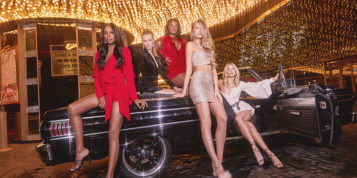Today, even the longest established and most famous FMCG brands are under intense pressure. The rise of the challenger brands is one of the most important issues they are facing, and it needs to be addressed as a matter of urgency. The rules of the game have now changed, with structural factors (for example significantly lower barriers to entry) through to attitudinal factors (such as consumers appetite for experimentation) dramatically altering the landscape.
In order to establish the current state of play when it comes to challenger brands, and the impact they are having, we commissioned quantitative research of over 1,000 consumers, polling people who had recently switched from an established brand to a new challenger across eight categories (food, soft drinks, alcohol, household products, healthcare, toiletries, beauty and grooming). The findings indicated the threat to established brands is even more present than people realise.
The five harsh truths established brands need to be aware of and act on
- Challengers are impacting all categories – across every category we examined, people are switching to challenger brands in significant numbers.
- The switch to challengers is likely to be permanent – most people intend to stick with the challenger brand post purchase. Of those who do not, more intend to try another challenger rather than revert to the established brand they used to buy.
- Challengers are delivering to expectations – we found little evidence that consumers are missing the “performance premium” historically associated with established brands.
- Higher consideration favours challenger brands – the more shoppers are invested in their purchase, the more probable it is that they’ll find a reason to try a challenger.
- People recognise and respond positively to the challenger mindset – it appears challengers are establishing meaningful points of difference at the emotional level – particularly amongst younger consumers.
Why challengers are winning
Established brands were products of the Industrial Age, and became masters of it. But in the Information Age, the rules have changed. Barriers to entry are now much lower. Via the major ecommerce platforms, the internet has democratised market access. Equally, digital and social media have created new, more affordable advertising channels.
Even more importantly, a series of attitudinal shifts has fuelled the rise of challenger brands. A growing scepticism about the established order, an increased appetite for experimentation and new experiences, and a re-set of consumer priorities, with greater emphasis on brand integrity and purpose, are all having an impact.
Where consumers lead, retail follows. Combined with a business requirement to simplify their in-store assortment, buyers in traditional retail are questioning the role within category of many established brands. Better, they think, to make space for challengers that can re-inject excitement (and potentially margin) into tired, slow growth categories.
Both consumers and retailers, then, are ready for change. This creates the ideal environment for challenger brands, and they’re exploiting these opportunities very effectively. What do established brands need to do to compete in this new environment? They need to learn from the challengers – re-inventing themselves around a point of conviction and turning that conviction into new behaviours and actions.
What might this re-invention look like? Firstly, change at the product level.
Safeguarding product reputation is vital. Established brands are under extreme pressure to keep prices down. Whilst enhanced price competitiveness is desirable, it cannot come at the cost of diminished product quality or reduced sizing. Brands must not sacrifice equity they have taken years to build.
Prioritise insight-driven NPD. This is more important than ever. Not only does it bring news to the brand and the category, it blocks off spaces that challengers could seek to occupy.
Become a fast follower. Scale advantages can be leveraged in new ways. Whereas challengers must demonstrate the courage of their convictions and seek to do one thing brilliantly, established brands can trial many ideas simultaneously.
Embrace cannibalisation. It is much better to cannibalise yourself than to become someone else’s prey. Whilst it might fly in the face of traditional BigCorp logic, this may be the best way for established brands to re-energise themselves and cut off the challengers’ oxygen supply.
Dig deep for authentic truths. Challenger products have an integrity about them; they are physical manifestations of the brand’s conviction. To compete, established brands need to work ever harder to identify compelling and credible product stories.
Beyond the product level, and perhaps even more importantly, brands need to change at the emotional level.
Re-framing brand architecture is one area to consider. Whereas challengers start with a clean sheet of paper, established brands carry the baggage of history. Heritage cannot be ignored and can be exploited as a launchpad for re-invention. Brands can signal change powerfully by confronting consumers’ existing perceptions.
Adopt radical new behaviours – by combining insight with new technologies, brands can do things that simply weren’t possible before. This can be particularly effective when tightly tailored to channel. It’s equally important to ‘story do’ as well as story tell. Established brands are expert storytellers. But consumers now look for more than stories; they know that actions speak louder than words. Out of necessity, challengers typically build their stories from the ground up. Established brands need to demonstrate their new-found conviction by doing the same, thereby giving people new reasons to re-engage and re-discover the brand.
Finally, the time has come for established brands to let go of the narrative. Whilst closely managed tools such as brand books, rigorous guidelines and entrenched vocabularies still have value, they are increasingly less effective in a highly networked world. Brands must have the courage to evolve their approach and open up their narrative. Having provided the right stimulus, they need to let consumers shape and develop the story at their own pace and in their own language.
Established brands much start behaving differently now if they are going to survive into the long term. Fortunately the challengers are providing them with a clear path to follow.





